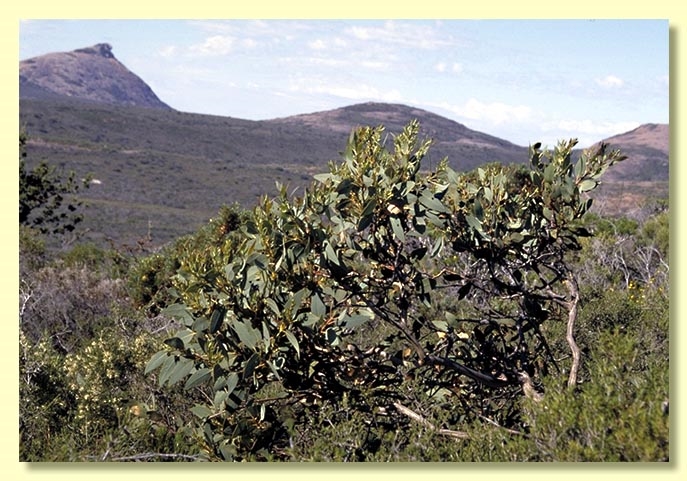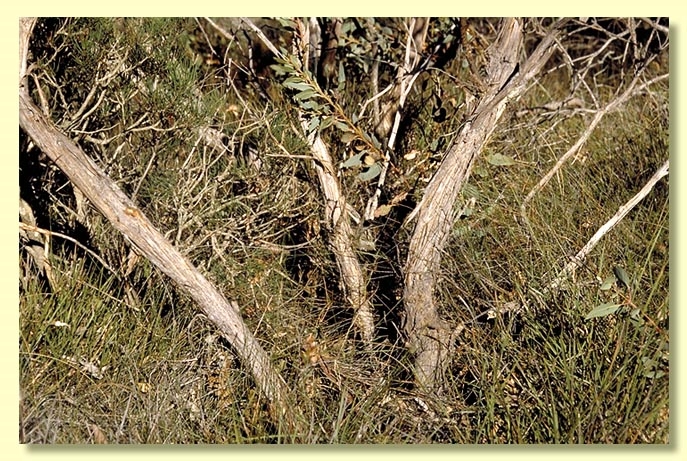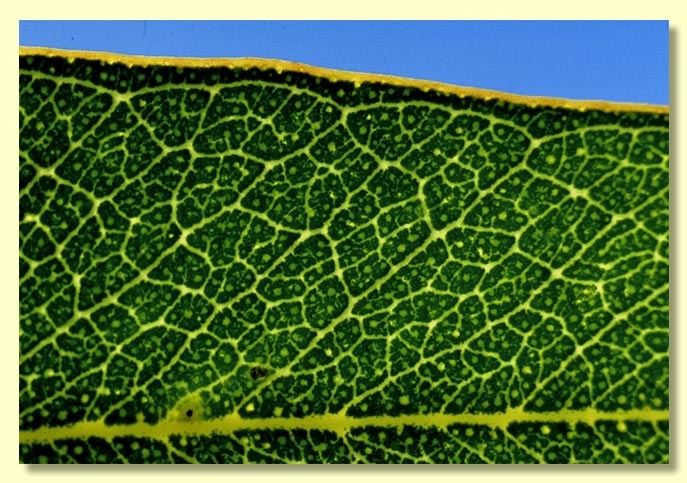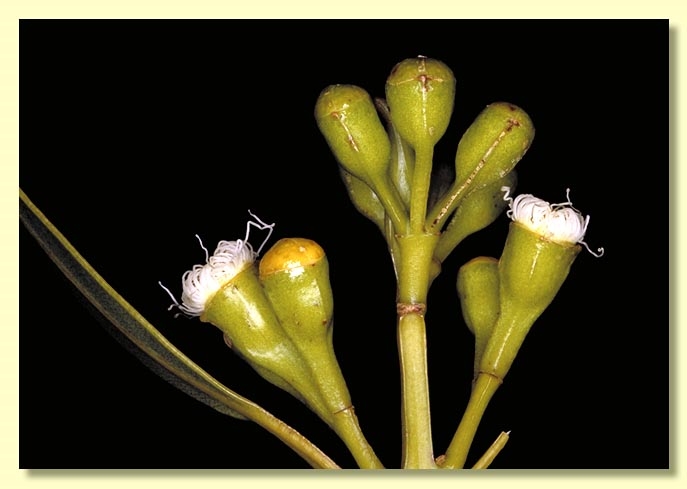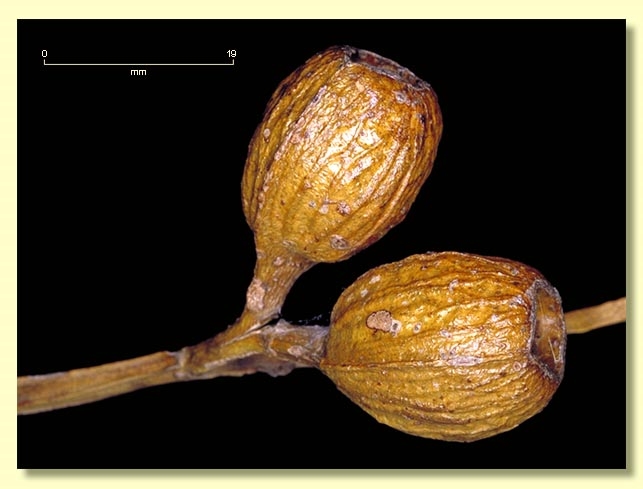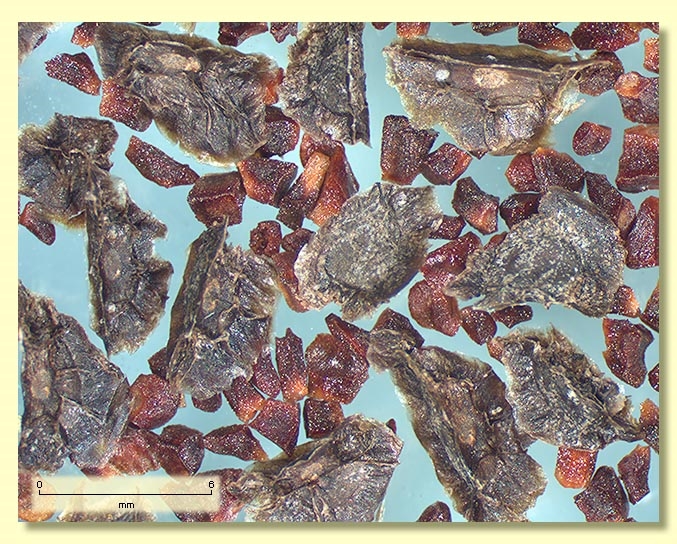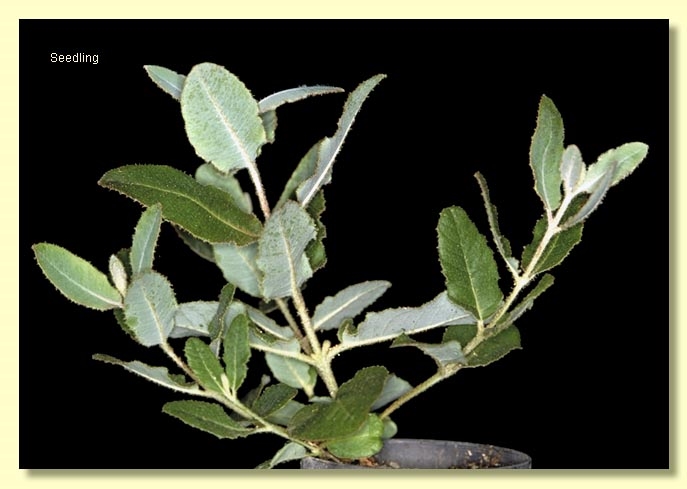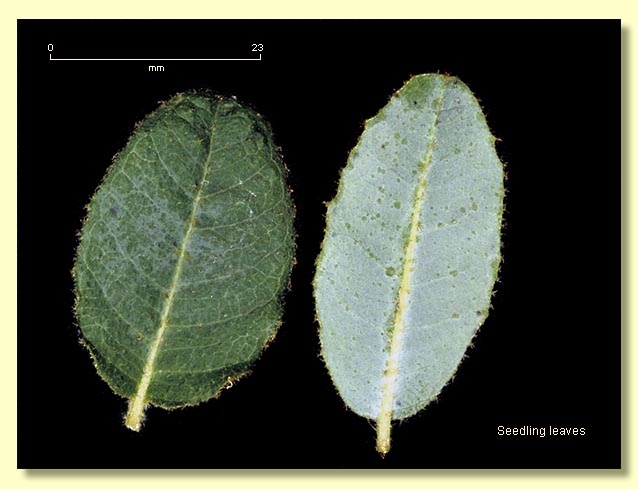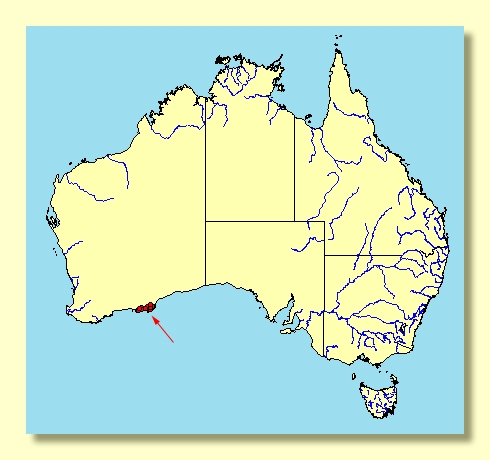Euclid - Online edition
Eucalyptus extrica
Eucalyptus | Eudesmia | Limbata | Heteroptera | Tetraedrae
Bark smooth throughout, grey to grey-brown, or with some persistent basal fibrous bark.
Branchlets not glaucous; oil glands usually present in the pith but sometimes hard to find.
Juvenile growth (coppice or field seedlings to 50 cm): stems square to round in cross-section, hairy on the lower stem only, glaucous near the tip, the rest of the stem usually green , juvenile leaves shortly petiolate, opposite, elliptical to oblong to ovate, (3)6-12 cm long, (2)4-6.5 cm wide, base lobed to rounded to tapering, apex rounded or pointed, green to grey-green to weakly glaucous, lamina on lower leaves hairy on the midrib and margins, margins sometimes minutely toothed due to hairs.
Adult leaves opposite, petioles 1.2–3 cm long; blade ovate to broadly lanceolate to lanceolate, 7–15 cm long, 2–5 cm wide, base tapering to petiole, apex pointed, concolorous, dull, green to slightly blue-green, side-veins at an acute or wider angle to midrib, tertiary venation sparse to moderate, intramarginal vein present, oil glands mostly island.
Inflorescence axillary single, peduncles broadly flattened, 0.6–2 cm long, buds 3 per umbel, pedicels 0.6–1.3 cm long. Mature buds obovoid, (0.6–0.8 cm long, 0.5–0.6 cm wide) hypanthium four-angled, not glaucous, outer perianth whorl sepaline, inner whorl operculate, operculum rounded to flattened, stamens grouped in four clusters, inflexed, anthers oblong, versatile, dorsifixed, dehiscing by longitudinal slits (non-confluent), style short, stigma tapered, locules usually 3 or 4, the ovules arranged in 4 distinct vertical rows on the placentae. Flowers whitish.
Fruit pedicellate (pedicels 0.7–1.3 cm long), barrel-shaped to cylindrical, 1.3–2.1 cm long, 1–2.2 cm wide, usually four-angled, not glaucous, disc descending, valves 3 or 4, enclosed or near the rim.
Seeds dull brown to black or greyish, irregularly pyramidal in shape or somewhat flattened, with a ragged flange around the edge, 5–6.5 mm long, sides ribbed, surface smooth not deeply pitted, hilum ventral/terminal.
Cultivated seedlings (measured at node 10): cotyledons reniform; stems square to round in cross-section, hairy, glaucous near the tip, the rest of the stem usually green or slightly glaucous, leaves petiolate, opposite, elliptical to oblong, 5–8 cm long, 2–3.7 cm wide, green to slightly glaucous, margins minutely toothed due to hairs, apex pointed, base lobed to rounded to tapering, lamina hairy on the midrib and margins.
Flowering has been recorded in February, March, April and September.
A mallee endemic to Western Australia, of subcoastal distribution east of Esperance to the Great Australian Bight. The bark is smooth or rough only at the base and the leaves on the mature plant are petiolate, opposite, dull green to slightly blue-green. The buds and fruits are in threes.
E. extrica is related to the well-known, strongly glaucous species Tallerack, E. pleurocarpa, of south coastal Western Australia. E. pleurocarpa occurs from the Stirling Range and Albany to east of Esperance, with a disjunct population north of Perth. E. extrica differs from E. pleurocarpa by having non-glaucous branchlets, adult leaves, buds and fruit (all strongly glaucous in E. pleurocarpa).
Intergrades between E. extrica and E. pleurocarpa are common in the subcoastal area around Esperance. The well-known name E. tetragona is based on such a specimen and regrettably can no longer be used, being replaced by E. pleurocarpa (see under that species for more detail).
Eucalyptus extrica belongs in Eucalyptus subgenus Eudesmia because of the combination of cotyledons reniform in shape and folded and clasping in embryo, buds with the calyx free and evident as four small teeth around the midline of the bud. (Sections Ebbanoenses and Reticulatae in this subgenus have the calyx fused to the corolla and evident as four small teeth at the apex of the bud.) Within subgenus Eudesmia, E. extrica belongs in the Section Limbatae, series Heteropterae, subseries Tetraedrae, that is further characterised by having seedling leaves with stellate hairs, the presence of oil glands in the pith of the branchlets, stamens arranged in four bundles, flanged ± pyramidal seeds and buds and fruit square in cross-section. The other species in subseries Tetraedrae are E. gittinsii, E. pleurocarpa, E. conveniens, E. eudesmioides, E. erythrocorys and E. roycei. E. extrica is closest to E. pleurocarpa and the differences are discussed above. Of the rest, E. extrica has more consistently opposite larger adult leaves and the population of E. extrica, being on the coast east of Esperance, is nowhere near the natural distribution of the others in this group.

